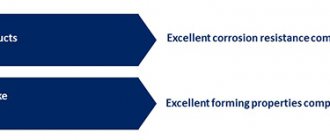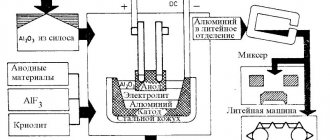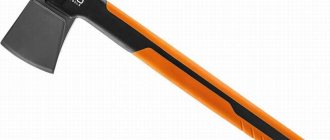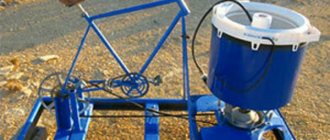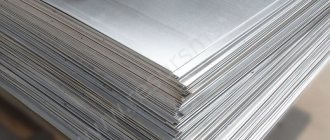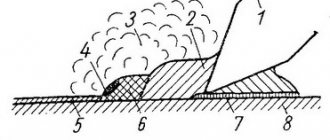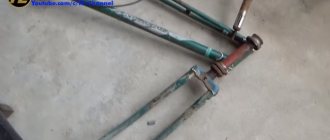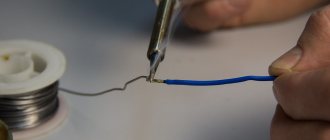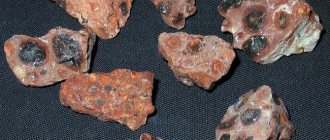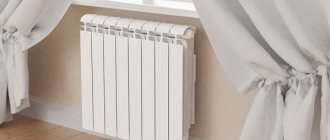Metal anodization is an electrochemical process of creating a protective oxide film that protects the metal surface from environmental influences. Hence another name that best reflects the essence - anodic oxidation. Coating technology is used to process not only steel, but also most non-ferrous metals. The exceptions are iron and copper. These elements are characterized by the formation of two oxide compounds at once - this negatively affects the integrity of the film and its adhesion to the base surface.
During the development of anodizing, several methods of carrying out the work were developed. All of them will be discussed in detail in this article.
What is anodized metal surface
By anodizing a metal we mean a process of processing it, for which an electrolyte and an electric current of a certain magnitude are used. As a result, a high-strength oxide film is obtained on the surface of the products. It significantly increases the service life of products, corrosion resistance, and ensures the absence of streaks and scratches.
The strength and mechanical properties of the material also change significantly, which depends on the composition of the metal and other characteristics:
- characteristics of the electrolyte used;
- cathode properties;
- characteristics of the anode.
A feature of anodic oxidation is that as a result of its implementation, no substances are applied to the surface of the metal. The protective film is formed as a result of the transformation of the material itself during the occurrence of appropriate reactions.
The use of other electrolytes to produce anodized aluminum
There are other electrolytes for producing an oxide film on aluminum; the basics of the anodizing process remain the same, only the current modes, process time and coating properties change.
- Oxalic acid electrolyte. This is a solution of oxalic acid 40–60 g/l. As a result of anodization, the film comes out yellowish in color, has sufficient strength and excellent ductility. When the coated surface is bent, a characteristic cracking sound of the film is heard, but this does not lose its properties. The disadvantage is weak porosity and poor adhesion compared to sulfuric acid electrolyte.
- Orthophosphorus electrolyte. Orthophosphoric acid solution 350–550 g/l. The resulting film is very poorly painted, but it dissolves well in nickel and acidic copper electrolytes during the deposition of these metals, that is, it is used mainly as an intermediate step before copper plating or nickel plating.
- Chromium electrolyte. A solution of chromic anhydride 30–35 g/l and boric acid 1–2 g/l. The resulting film has a beautiful gray-blue color and is similar to an enameled surface, hence the name enameling. Currently, enameling is very widely used and has a number of other electrolyte composition options based on other acids.
- Mixed organic electrolyte. The solution contains oxalic, sulfuric and sulfosalicylic acids. The color of the film differs depending on the brand of the anode alloy; the strength and wear resistance characteristics of the coating are very good. Aluminum parts for any purpose can be anodized no less successfully in this electrolyte.
Advantages and features of the technology
When anodizing a metal, the following can be achieved:
Anodizing scheme
- used for parts that are susceptible to corrosion. As a result of processing, a reliable protective film is formed on the surface;
- the strength characteristics of the metal increase. It is less susceptible to mechanical and chemical influences;
- when cookware is anodized, it becomes possible to use it effectively at any temperature, food does not burn on it;
- possibility of performing galvanic coating of other materials – chromium, titanium, gold;
- Products prepared in this way acquire dielectric properties (unable to conduct electric current).
After the metal has oxidized, it can be decorated. If all the nuances of the technology are observed, it is possible to improve the aesthetic qualities of the material and give it a more even and rich color. Decoration of products can be carried out with or without additional mechanical processing.
Anodizing can be performed both at home and in industrial conditions. In the second case, a thicker oxide film is obtained, which significantly improves the strength characteristics of metal products. But even if you carry out this procedure at home, the protective properties of the treated parts increase significantly.
Advantages of using anodized aluminum profile
Anodized aluminum profiles are used for the manufacture of hinged ventilated facades, assembly stairs, and handrails. The protective film not only protects the metal itself, but also your hands from gray aluminum dust. Women will be interested to know that aluminum knitting needles are also anodized so that the craftswoman’s hands do not get dirty. But anodized aluminum has also found its use in construction.
Anodizing aluminum profiles is used when installing hinged ventilated facades in highly aggressive environments. Highly aggressive environments are coastal areas (due to the high salt content in the air) or areas near factories. Cities with a population of over a million rarely have a highly aggressive environment, but more often a moderately aggressive one. The assignment of an aggressiveness class occurs at the level of special sanitary and epidemiological surveillance services in agreement with the city administration - you need to look in their regulations.
Another important advantage is the coloring of the anodized surface. This is probably the main advantage of the described process. The possibility of decorative processing of manufactured aluminum products became possible, which immediately led to a wide spread of its use.
The high wear resistance of the anodic film contributed to an increase in the content of anodized aluminum parts in the total volume of shipbuilding and aircraft manufacturing enterprises.
The facades of many Olympic venues in Sochi are made using the Hinged Ventilated Facade technology on anodized aluminum systems.
Similar articles
- Facade aluminum panels
Chemical
anodizing
- 15-20 years
...
Composite
aluminum
sheet consists of two
aluminum alloy
, thickness from 0.25 mm to 0.5... Read more - Stained glass glazing of facades: modern options
Why is stained glass made from
aluminum alloy
and not steel?
...
Alexey on
Anodizing aluminum
and its
alloys
. Read more - Comparison and rating of subsystems for ventilated…
Therefore,
the aluminum
substructure cannot be mounted fixed
... Anodizing
is an expensive procedure and is performed exclusively at the factory. Read more - What you need to know BEFORE you start designing systems...
The use of
aluminum alloy
in structures is undesirable and is permissible only if they are
anodized
or
anodized
and painted. Read more - Ventilated facade made of metal cassettes
Anodized aluminum
is a lightweight material that is not susceptible to
...
The cost of a similar option made of
aluminum alloy
is from 2000 rubles. Read more - Bracket for ventilated facades - what is it...
Anodizing an aluminum
bracket.
...
The need
to anodize
AD-31 aluminum
alloy bracket Read more
Methods for performing the procedure
Anodizing copper and other metals can be done in several ways. Each of them has its own advantages and disadvantages and implementation features.
Warm method
Anodizing stages
The simplest method of performing anodizing, which can be used even at home. The processing takes place at room temperature. When using organic paint, iodine or brilliant green, the aesthetic qualities of the processed parts can be significantly improved.
Hard anodizing of metal using this technology cannot be carried out. If this is done, a thin oxide film forms on the surface of the material, which does not provide reliable protection against corrosion and is easily damaged. But if, after performing such a treatment, the products are painted, the adhesion of the coloring compositions to the surface will be excellent. It is in this way that high-quality protection against corrosion can be ensured and the service life of parts can be extended.
Cold method
To perform anodic oxidation using the cold method, it is necessary to ensure temperature stability. It should be within -10–+10°С. The optimal temperature is considered to be 0°C, which corresponds to the parameters at which an ideal electrochemical reaction occurs.
Aluminum color anodizing methods
When these indicators are achieved, anodic and cathodic processing of the metal will occur more efficiently, forming a durable film on the surface. It provides the best protection against corrosion.
Using the cold method, you can perform electroplating of copper, gold and other metals. To do this, you need to correctly calculate the current using special equations. The resulting parts are almost impossible to damage. They are characterized by a long service life in particularly aggressive environments (in contact with sea water).
A minor disadvantage of this technology is the impossibility of applying paint to the resulting surface. To change color, a metal spraying method is used or an electric current of a certain magnitude is used.
Types of electrolytes
At home, not only industrial chemical acid solutions are used, but also simple products that can be found in any kitchen:
- When anodizing titanium, you can take sodium chloride, sulfuric or phosphoric acid.
- For aluminum, oxalic, chromic or sulfuric acids are used.
- Instead of acids, you can use table salt and baking soda for anodic and cathodic treatment of disks or other steel objects. You can make the necessary electrolyte by mixing 9 parts of a concentrated soda solution with one part of saline.
The exposure time of disks, plates, and other metal objects in an electrolyte container under current is calculated according to the equation, based on physical and chemical parameters.
Anodizing various types of metal
Anodizing metal can be performed for different types of materials:
Anodizing technology
- aluminum It is carried out quite often, for which the part is lowered into an acidic environment, and a positive current source is supplied to it;
- titanium. Often used in industry, but requires special treatment to increase wear resistance and anti-corrosion qualities;
- steel. An alkaline or acidic environment is used, which gives the metal excellent strength;
- copper It is performed by placing the parts in an acidic environment through which an electric current is passed.
Anodizing of metals
Advantages and disadvantages
Titanium is the most popular of the metals that can be anodized. It has been used in the jewelry industry for about twenty years. The main advantage of anodized jewelry is their rich color palette. Made from titanium and niobium, they are also hypoallergenic and suitable for use on fresh piercings . The light weight also speaks in their favor .
Some anodized metals cause irritation and allergies, so before purchasing jewelry you must check the alloy composition.
Method of procedure at home
Increasingly, in everyday life there is a need for additional protection of metal products from the harmful effects of the environment. Anodizing can be done for this purpose. It provides the material with the best technical characteristics.
Anodizing copper or other metals begins with preparing the solution. To do this, distilled water is combined with the selected acid in certain proportions. Materials must be cleaned before processing, which improves the effectiveness of the procedure. Only after this the metal products are immersed in an acid solution and an electric current is connected.
Aluminum anodizing technology at home
How to care
Anodized jewelry should be wiped with a clean cloth each time it is worn. Avoid contact with abrasive and corrosive substances that can damage the oxide film - hairspray, perfume, bleach or chlorinated water.
Ultrasonic cleaning of anodized jewelry is prohibited. They are washed by hand, dipping in a weakly concentrated soap solution for several minutes, then washed and dried in the open air. It is advisable to clean jewelry no more than twice a year.
Video
Precautions and technique tips
To anodize metal effectively and safely, you need to follow these simple tips:
Anodizing must be carried out wearing protective gloves.
- during work, it is advisable to use special gloves, glasses, a mask, which will protect the body from harmful fumes;
- any plastic container or old enamel bathtub without chips is suitable as a container for carrying out a chemical reaction;
- the thickness of the cable should be selected taking into account the strength of the current produced;
- To give steel a rich black color, sodium nitrate is used. The working temperature of the solution is +100–140°C.
Related video: Do-it-yourself anodizing of aluminum
Useful articles
The process of chrome plating metal products at home
Technology for galvanizing at home
Question No. 17 - How does the process of hard anodizing aluminum occur?
How does the anodizing process work?
The whole procedure consists of three stages of work: preparing the metal, its chemical treatment and fixing the coating to the surface. We propose to take a closer look at each of these phases using the example of processing a material such as aluminum:
- Preparatory stage. The metal profile is cleaned mechanically, after which it is polished and degreased. This must be done so that the coating is firmly fixed to the base. Next comes the use of alkalis. The part is placed in the solution for some time for etching, after which it is transferred to an acidic liquid, where the aluminum is brightened. The final stage of anodic preparation is the complete washing of parts from residual alkali and acid.
- Chemical reaction. The prepared product is placed in an electrolyte. It is a solution of acid to which a current is connected. The material to be anodized is most often treated with sulfuric acid, and its oxalic analogue is used to achieve color. A successful result is achieved with the correct temperature and current density. Hard anodizing involves the use of low temperatures, but if the goal is to obtain a soft and porous film, the performance increases.
- Stage of fixing the coating. The resulting aluminum parts with the film formed on them have a porous appearance, so they need to be strengthened. Several methods are used for this: dipping the product in hot water, treating with steam or a cold solution.
For further color painting of the product, there is no need to fix the anodizing. Existing paints and varnishes adhere perfectly to the porous surface, forming excellent adhesion to it.
It is worth noting that metals are coated with such anodizing at industrial enterprises. A particularly durable type of coating can be achieved with a hard type of procedure. This material is used in automobile production, aircraft construction and construction.
Anodized decorations
Studs, rings, pendants, brooches, and piercing jewelry are made from anodized metals. The combination with precious and semi-precious stones and enamel gives rise to extraordinary jewelry compositions made in original colors.
Sometimes anodized metal is used only as an insert
This is especially valuable when creating jewelry in animalistic and floral styles . Characters of tropical latitudes, bright and colorful, are created using anodizing.
When it comes to piercing jewelry, anodized models are widely represented among them. There are no special tips for choosing. You need to be guided only by your preferences and desires. The size will be determined by the piercer.
